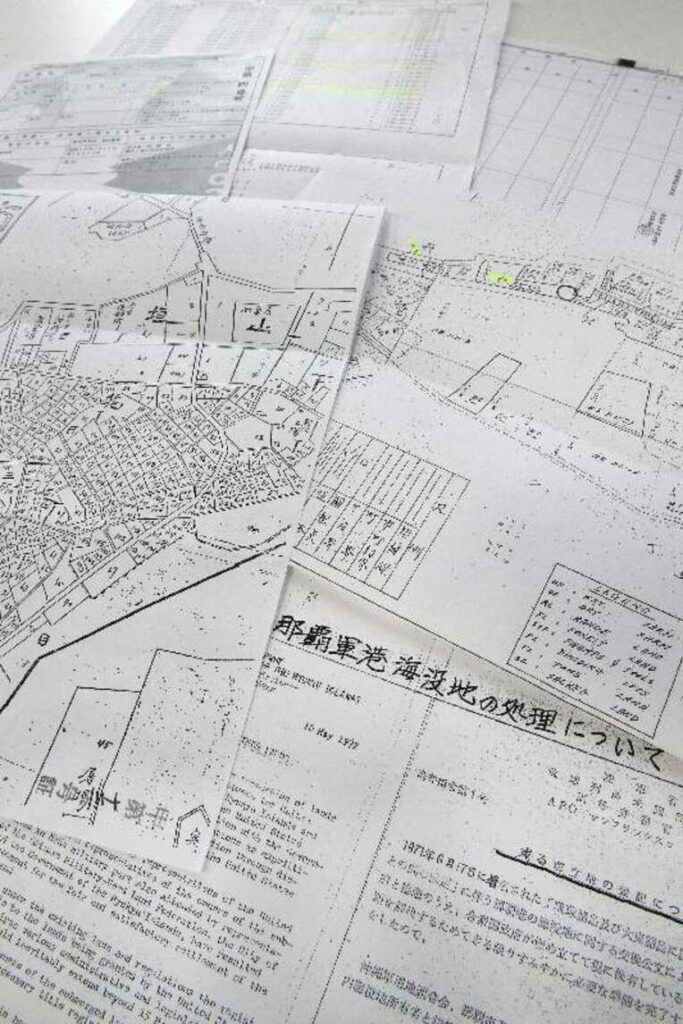Before, I have written about the little known issue of Plots of land of unknown ownership in Okinawa, which divides the hearts of Okinawas in their very own religion of ancestor whorship. Here is another recent case. It is a typical case because there are other and even larger areas of tombs and surroundings that have been assumed by other owners during the postwar chaos.
I think many people tend to blame the US for everything, but, as seen in my previous article, the US administration in Okinawa at the time had a very good procedure with three signatures needed, including that of the guarantor of the neighboring lot. There must have been Okinawans involved who claimed ownership. This indicates that Okinawans might took from Okinawans. Some of them might have been gangsters, as described in the previous story, but often they were probably ordinary people, as well as officials. Even though there is no clear evidence for any side, here is the story.
Before the Battle of Okinawa, they owned a 1,500-square-meter cemetery in Naha City, but lost their ownership due to the confusion after the war. The Association of Patrilineal Kinship Groups (Mōnchukai), whose ancestors are descendants of a king of the Ryūkyū dynasty, filed a lawsuit at the Naha District Court on January 4, 2018, seeking confirmation of ownership from the prefecture and Naha City, which administer the land.
The association plans to rely on the testimonies of residents at the time to prove ownership. Takayasu Shigehiko, 68, the representative of the association, from Osaka Prefecture, complained, “It took six years to collect the evidence. We will restore the pride of our ancestors.”
According to the complaint and other documents, the plaintiff, the Association of Patrilineal Kinship Groups of the Takayasu House of the Teki Clan (Tekiuji Takayasu Mōnchukai), was founded by the eighth son of King Shō Sei (1497–1555), the 4th king of the 2nd Royal Dynasty of the Shō-Clan of Ryūkyū. Since the ancestors made great contributions to the royal government of the Ryūkyū Kingdom in the 17th century, the royal government bestowed upon them a cemetery and a “royal bestowed grave.” The grave was in Sumiyoshi Town before the war and the association is said to have held the Tomb Sweeping Festival (seimei, April 4 or 5) every year at the cemetery.
However, due to the Battle of Okinawa, most of the prefectural land registers and cadasters were lost. After the war, the U.S. armed forces that occupied Okinawa decided the rightful owner of the land through the work of certifying ownership. The lawsuit alleges that the cemetery was subdivided into several parcels of land and that the owners were wrongly identified, or that they wrongly claimed to be the owners. According to Takayasu, the association was unable to participate in the certification process immediately after the war, and was unable to file an objection.
After that, the cemetery was requisitioned as military land and was disposed of under sea for the construction of Naha Naval Port. A replacement land was provided by the United States Civil Administration of the Ryukyu Islands, of which the prefecture only administers 60 square meters of the allotted land. The remaining 1,440-square-meter land are said to be owned by Naha City for unknown reasons.
The association plans to collect testimonies from residents who lived in the vicinity of Sumiyoshi before the war, as well as aerial photographs taken by the U.S. military before the air raids on October 10, to prove that the tomb actually existed. Official documents of the US Civil Government describing the process of submerging the cemetery were also submitted as evidence. Takayasu said, “The post-war confirmation work by the prefectural government is insufficient. The prefecture and city are not actively working to provide relief, and there must be many people who are suffering in the same way.”
The prefecture and city said, “We have not confirmed the complaint and would like to refrain from commenting.”
In March 2019, the Naha District Court ruled against it and the claims were not accepted.
© 2023, Andreas Quast. All rights reserved.

